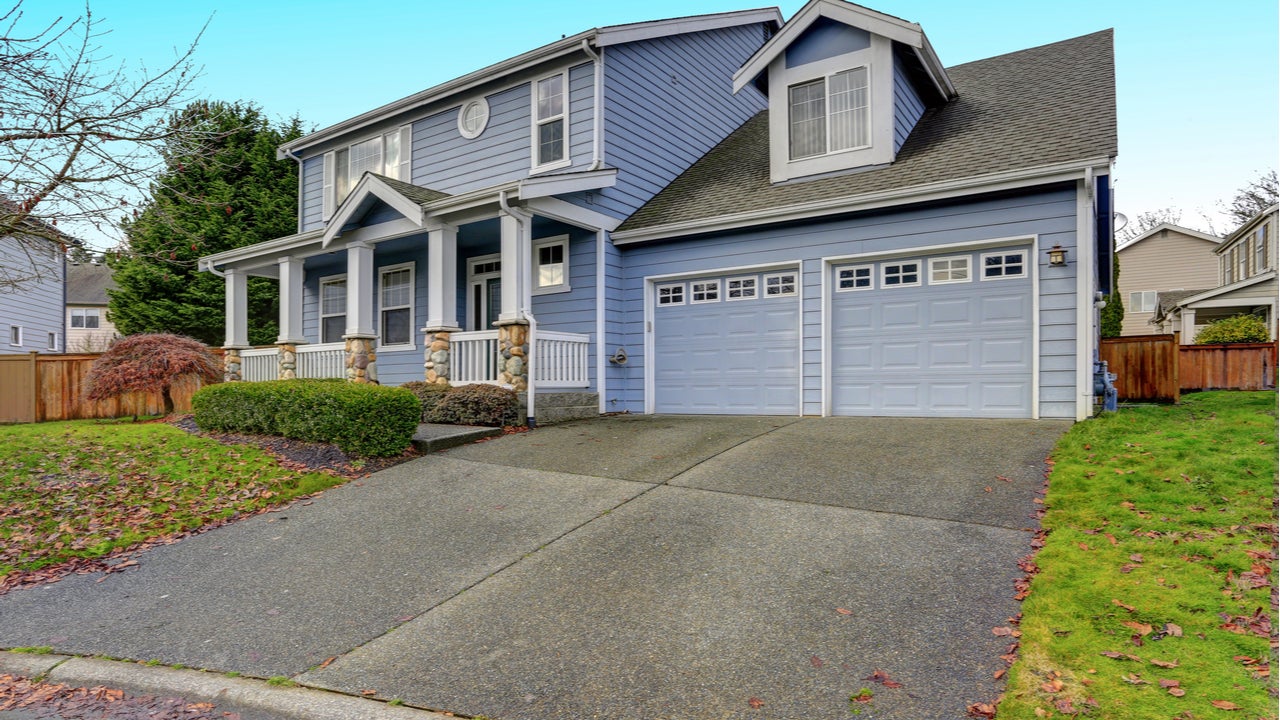How much equity can I borrow from my home? (And why isn’t it more?)

Key takeaways
- There’s often a big difference between the home equity you have and the home equity you can literally use, or tap. for ready cash.
- Homeowners cannot borrow the full amount of their equity — they must leave around 20% of it in the home.
- The amount of tappable equity is also affected by the homeowner’s outstanding mortgage, as lenders typically limit all home-based debt (both the primary mortgage and new loans) to about 80% of the home’s appraised value.
So, you’ve been faithfully paying your mortgage and property values in your area have steadily increased. Thanks to the unprecedented rise in housing prices of the last few years, Americans have amassed record levels of home equity, an ownership stake they can borrow against. You dream of tapping your home’s appreciated worth for a big upcoming expense — a major renovation or to pay the kids’ college tuition.
Alas, you may be disappointed. The appreciation in your home doesn’t translate dollar-for-dollar into ready cash. There’s often a big difference between the home equity you have and the home equity you can literally use. The actual amount you can get, and what you may pay to access it, can come as a shock.
Let’s look at why you may not be able to tap as much equity as you think — and how to figure out how much of your home equity you can really borrow.
Source: ATTOM fourth-quarter 2024 U.S. Home Equity & Underwater Report
Why can’t I tap more equity?
Your total home equity is your home’s market value minus what you owe on your home loan. But, this sum isn’t how much you can actually borrow with a home equity loan, home equity line of credit (HELOC) or cash-out refinance. The former is in a sense theoretical equity — the worth of your ownership stake on paper. The latter is what the financial pros call tappable equity and – unless you own your home outright — it’s invariably less.
The average mortgage-holding homeowner has, on paper, an equity stake worth about $313,000. However, the amount of tappable equity — able to be withdrawn, while leaving 20% of the stake untouched — comes to $203,000.
Here are 4 ways your tappable equity can come up short.
1. You can’t borrow it all
To begin with, lenders never let you borrow the full amount of your ownership stake. “It depends on the lender, but generally the maximum is going to be 80 percent of the [home’s] current appraised value,” says Ron Haynie, senior vice president of mortgage finance policy for the Independent Community Bankers of America, the primary trade group for small banks in America. He adds that some lenders may go higher, but the standard is 80 percent.
Put another way: You have to leave a certain amount of equity untouched, still in the home, so to speak — generally 20 percent. Let’s say your home has appreciated to a value of $500,000 and you own it free and clear. Even with an equity stake worth $500,000, a lender might insist you keep $100,000 in the house, capping your borrowing power to $400,000.
Why you can’t tap all of your equity
Why do lenders limit the amount of equity you can tap? To mitigate risk, both theirs and yours, in case your home’s value drops. If you leveraged all of your equity and your home depreciated — due to an economic recession or a decline in local property values, say — you could end up owing more than it’s worth. Colloquially known as being underwater on your mortgage, it’s a precarious situation, as you won’t be able to sell your house at its current value without owing the difference to your lender.
(Home’s appraised value x 0.8) – mortgage balance = typical tappable home equity
2. You’ve got a big mortgage balance
Your outstanding mortgage will also impact the amount of equity you can tap. In deciding how big of a home-backed loan to give you, lenders look at something called a loan-to-value (LTV) ratio — the size of your loan as a percentage of your property’s worth. The higher the LTV, the more risk for the lender, so generally, lenders want your LTV to be no more than 80-85 percent — effectively, the flip side of keeping 15-20 percent of equity untapped.
Here’s the catch: When you go to apply for a home equity loan or HELOC, lenders don’t just look at what LTV of that loan would be. They consider your mortgage too. It’s this combined LTV (CLTV), the sum total of all your home-based debt, that can’t exceed 80 percent.
For example, say your home is worth $500,000 and you owe $250,000. That translates to a 50 percent LTV.
250,000 [mortgage balance] / 500,000 [home value] = 0.5 or 50%
Now, say you want to take out a $150,000 home equity loan. Your $250,000 primary mortgage and the $150,000 combine to make $400,000 — which is 80 percent of $500,000. So, you have a CLTV of 80 percent.
$220,000 [mortgage balance] + $150,000 [home equity loan]) / $500,000 [home value] = 0.8 or 80%
Obviously, the higher your home loan balance is, the higher your CLTV ratio and the less available equity you have to borrow against — and vice versa. Say you want to borrow $50,000 with a home equity loan. Since your home is valued at $350,000, and you have a mortgage balance of $250,000, that means you have $100,000 in equity — plenty for the loan, right? Unfortunately, no. The $250,000 mortgage balance plus the $50,000 home equity loan would put you at $300,000, or a CLTV of around 86 percent — too high for most lenders.
This is why home equity loans often work best for homeowners who are well into their mortgage terms, and have a substantial equity stake built up. Many lenders insist that HE loan and HELOC applicants own at least 20 percent of their homes outright.
If you have more than one home — or are planning to buy a second one, using the equity of your first home — some lenders may consider the CLTV of all of your properties combined, explains Satyan Merchant, Senior Vice President of Automotive and Mortgages at TransUnion. “In an extreme case, I may have a 50 percent loan-to-value on one of my properties but I might be overleveraged with 120 percent on another one,” says Merchant. “So, it’s really important for the lender to know the combined-loan-to-value across all my properties.”
3. Your home is worth less than you thought
Many rosy home equity projections fall short for another reason — an over-valuation of the home.
All home equity calculations — and home equity calculators — begin with your home’s worth. While there are many online home value estimators, their accuracy is often questionable — and they’re just estimates, anyway. In determining your loan, your lender is going to order up a home appraisal and use the value determined by the appraiser. “It gets down to, if your house appraises for less than what you think it is, the amount that’s going to be available to you is going to be less,” says Haynie. “You may have wanted $100,000 — you may only get $70,000.”
Appraisals can be more apt to fall short as you and your property get older. According to a 2023 study by the Federal Reserve Bank of Philadelphia, there’s a direct correlation between an applicant’s age and the likelihood that they’ll be denied due to “insufficient collateral” — the property appraising below the applied loan amount, and so unable to back a refi or home equity loan.
4. Your financials are lacking
Here’s another wrinkle: You can’t tap your home equity because you don’t qualify for a loan.
Like your initial mortgage application, lenders have financial requirements for borrowing against your home equity. “Even if somebody has a lot of equity in their house, generally the lender’s not going to make that loan just based on equity,” Haynie says. It’s also going to look at factors like your credit score and debt-to-income (DTI) ratio. These variables, plus your income and CLTV, all impact how a lender decides how much to lend you, and how much interest to charge you as well, Merchant explains.
It can be tough to get a home equity loan or HELOC, especially — tougher than a primary mortgage. In fact, over 48 percent of HELOC applications were denied in Q3 of 2024, according to the Home Mortgage Disclosure Act data. It’s common for lenders to require a minimum credit score of 680, with the best interest rates reserved for those with credit scores of 740 and up.
On its face, a cash-out refinance may appear easier to qualify for, with a lower minimum credit score of 620. However, since cash-out refinances typically involve larger amounts and have a more lengthy and strenuous underwriting process, they can be more difficult to get, explains Greg McBride, Bankrate’s chief financial analyst. In fact, 21 percent of cash-out refinance loan applications were denied in 2024, according to the Home Mortgage Disclosure Act data. Over 28 percent were withdrawn or left incomplete.
Credit score: Minimum of 620 for a cash-out refinance and 640 to 680 for a home equity loan or HELOC
Debt-to-income (DTI) ratio: 43% or less
Combined loan-to-value (CLTV): No more than 80%, including both your primary mortgage and the home equity financing option you choose
How tappable home equity dwindles
Say you own a home you believe to be valued at $400,000, and your primary mortgage balance is $250,000. This means you have $150,000 in equity, equal to 37.5 percent of your home’s value. But don’t think this means you have $150,000 to play with. Or even $120,000 (assuming you leave 20 percent equity untouched).
Remember the loan-to-value ratio, the CLTV? Let’s assume your lender demands your debts not exceed 80 percent of your home’s worth — that comes to $320,000. You already owe $250,000 on your mortgage. So, subtracting your current mortgage from your maximum CLTV of $320,000:
400,000 x.8 = 320,000 – 250,000 = 70,000
That leaves you with $70,000 as the maximum amount of home equity you can tap.
When you apply for a HE loan or HELOC , the lender orders a home appraisal. If the appraisal comes back at $400,000 or above, and you have a good financial profile, you’re likely to get approved for the $70,000.
However, let’s say the appraisal comes back low — $370,000. With a mortgage balance of $250,000, you’re now left with $120,000 in equity. Since you have to keep 20 percent equity ($74,000) in the home, that leaves you with only $46,000 you can tap.
Finally, don’t forget closing costs (yes, these out-of-pocket, upfront expenses, which you doubtless remember from your first mortgage, come with home equity financing too). A cash-out refinance, which replaces your primary mortgage with a new bigger one, basing the difference on your home equity’s worth, carries closing costs that can account for 2 to 5 percent of the loan principal. For a loan of $320,000 (your $250,000 balance plus the $70,000 in cash you’re taking out), that can cost you in the range of $6,400 to $16,000.
Alternatively, home equity loans and HELOCs come with lower upfront fees. But they do have higher interest rates than cash-out refis: A monthly payment on a 20-year home equity loan of $70,000 at 9.1 percent is currently $634.32. If you don’t have the income to qualify for this payment, you’ll be lent less or denied the loan.
How to tap more home equity
How to boost how much equity you can borrow? It can be tough, but there are ways.
- Get another appraisal: If you’ve been denied the loan amount you want because your home appraised low, you may be able to appeal it and get the lender to re-appraise. Carefully review the appraisal report, looking for any errors or missing information: Did they mis-state the square footage? Overlook a bedroom? Use outdated comps? “Appraisals that are incorrectly too low should be appealed — mistakes and oversights do occur from time to time,” says McBride. You can also request and pay for a second appraisal. But there’s no guarantee it’ll come up with a better result.
- Try a different lender: While lenders may have similar guidelines, they prioritize different loan types depending on their business strategy. “Banks tend to constantly evaluate where they want to grow or pull back,” says Merchant. Smaller banks and lenders may be more amenable because they want to offer more of a certain home equity product, he explains. Other lenders have higher borrowing thresholds. Discover, for instance, offers home equity loans with up to a 90 percent CLTV, and Lower.com offers a HELOC with up to 95 percent. Of course, such products may be more difficult to qualify for or carry higher interest rates.
Increasing your home equity borrowing power
If you can’t get a big enough home loan now, you may have to wait — and think longer term. First, you can try remodeling to boost your home’s value. Focus on small, more affordable improvements like upgrading your garage door, boosting your curb appeal, and making small-but-significant repairs. It’s amazing what a new coat of paint can do — literally. All of these efforts can add up. Just remember to document them and submit a list of your improvements to the appraiser, when it comes time to apply.
Still, home value appreciation is more affected by the real estate market trends than by consumer decisions, Merchant explains. “Where a consumer does have a little more control is their own credit,” he says. “A tangible thing a consumer can do is to ensure they’re taking the right steps to manage their credit to get their credit score as high as they can.” So, strengthen your financial profile — paying down debts as much as possible.
And increase your assets — starting with your home. The simple truth is, if you want to tap more equity, create more equity to tap by paying your mortgage. Due to mortgages’ amortization schedules, the further along you are in your term, the more equity you’ll accrue with each payment. If you can pay more each month, or make an additional payment, your ownership stake will appreciate faster.
Bottom line on borrowing against home equity
So, how much of a home loan can your equity yield you? Due to a variety of reasons, it might be a lot less than you think. There’s a big disparity between your theoretical equity and your tappable equity. If you can’t borrow the amount of home equity you want now, you may be able to do it later. Take the time to improve your credit, pay down debts, upgrade the home. When you’re ready, research the best home equity lenders to find the product for you.
FAQ about tapping home equity
Additional reporting by Mia Taylor
You may also like

What is a title search on property?

How much should I spend on a home?




